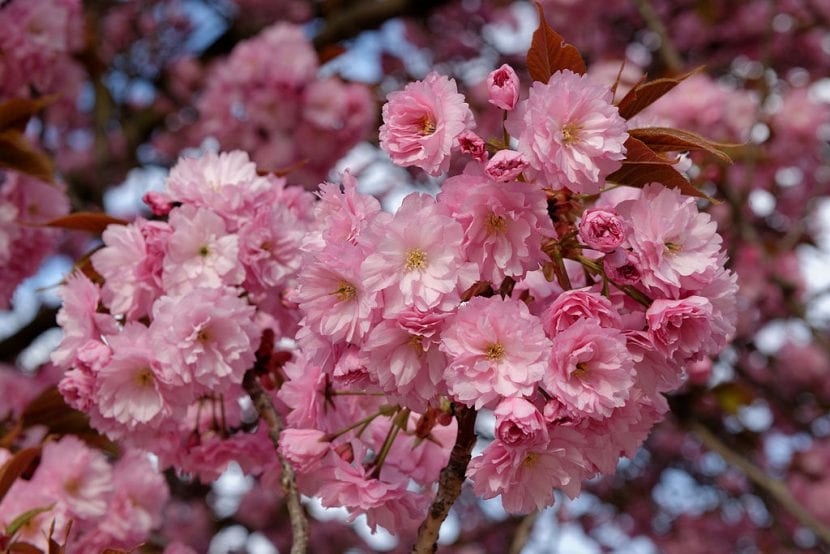
Image - Wikimedia / Marie-Lan Nguyen
El Prunus serrulata 'Kanzan' It is one of the most popular Japanese cherry varieties, and for good reason. Every spring, when the temperatures begin to improve after the frosts, its beautiful pink flowers cover the branches making the plant become a natural spectacle that you will not be able to stop admiring.
If we talk about its maintenance, the first thing to be clear about is that it has, like all plant species in the world, its preferences and needs.
Origin and characteristics of Prunus serrulata 'Kanzan'
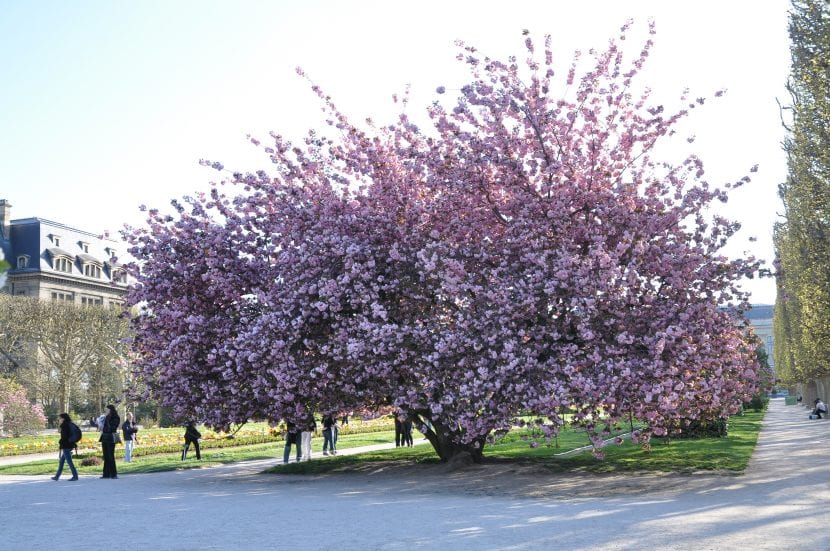
Image - Wikimedia / Moonik
Known as Japanese cherry, Japanese cherry or Prunus 'Kanzan', it is a cultivar of Prunus serrulata originally from Japan that belongs to the genus Prunus. Like the rest, it is deciduous, which means that it falls at a certain time of the year (in this case, it is autumn-winter). Reaches a maximum height of 12 meters. The leaves are simple, ovate-lanceolate, with a serrated or double serrated margin, 5 to 13cm long by 2,5 to 6,5cm wide, and turn yellow, red or crimson before dropping.
The flowers, which sprout in spring, are double (that is, they have two layers of petals) and are grouped in clusters of two to five flowers, and are pink. It does not produce fruits, since it multiplies only by grafting, usually on Prunus avium.
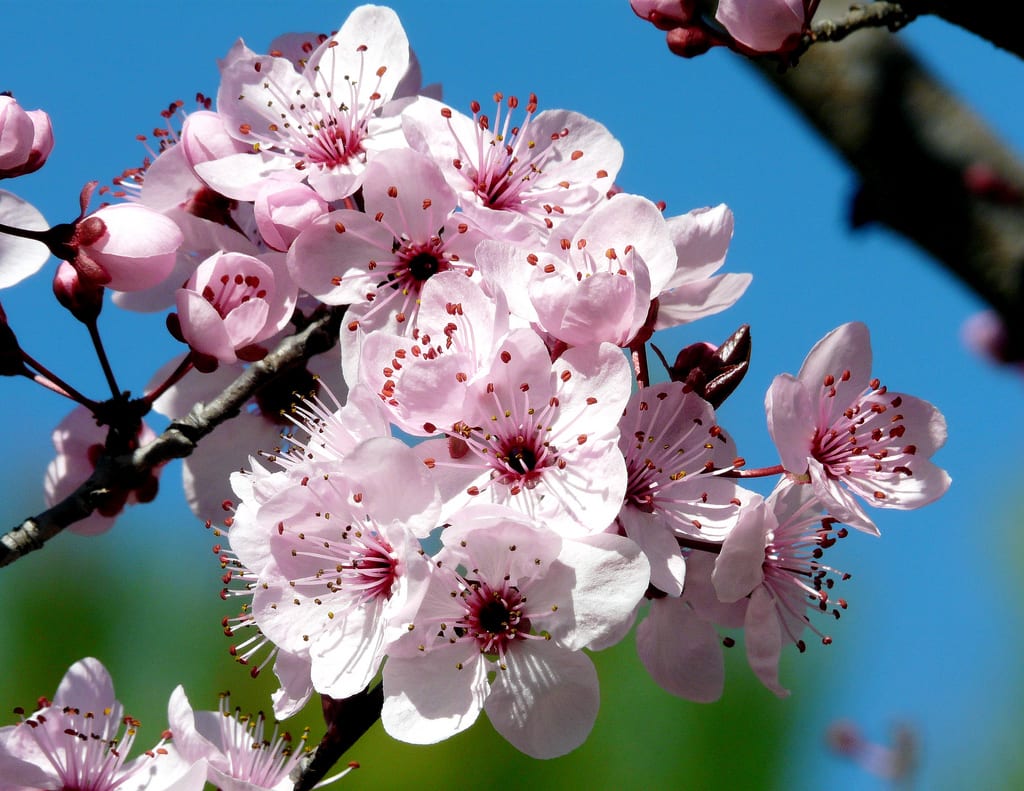
What are their cares?
If you want to have a copy, we recommend that you provide it with the following care:
Climate
When we go to buy a plant, the weather is the first thing we have to think about. If the conditions are not suitable, it will do no good to have a good soil or to be watered when it touches. Therefore, if we intend to acquire a Prunus 'Kanzan', it is necessary to take into account that you will only live well, at ease, in temperate climates, with frosts in winter and mild temperatures in summer.
Earth
- Garden: Prefers soils rich in organic matter, loose and with a neutral or slightly acidic pH. Tolerates alkalis.
- Flower pot: We can also grow it in a pot -which has to be wider and deeper from time to time- filled with, preferably, substrate for acidic plants (for sale here) mixed with 30% akadama (for sale here) or similar (arlita, pumice, etc.).
Irrigation
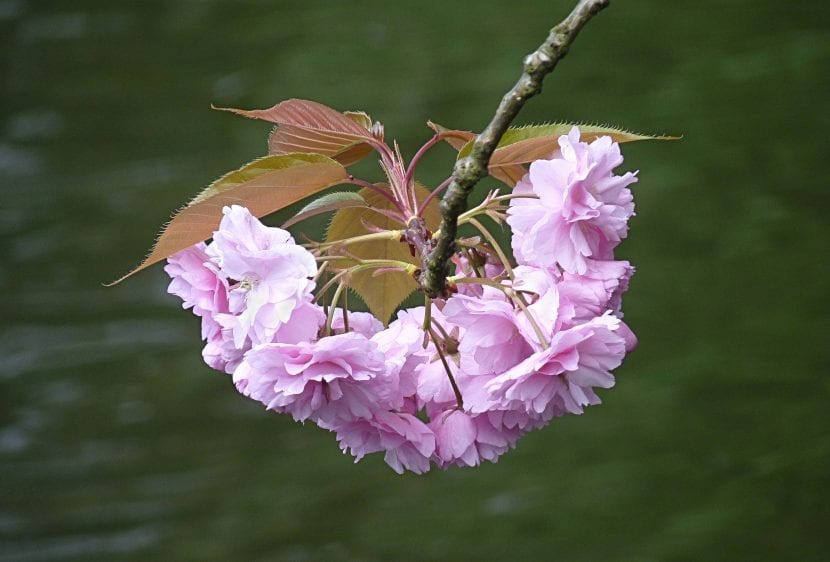
Image - Wikimedia / Jamain
Irrigation must be frecuente, but avoiding waterlogging. During the summer, if it is very hot and dry, we will water 3-4 times a week; the rest of the year about 2 times a week will suffice.
We will use rainwater, suitable for human consumption, or without lime whenever we can. You have to know that if we water with very calcareous water, it could have iron chlorosis since the lime prevents the iron from being absorbed by the roots.
The symptoms of this problem are the yellowing of the leaves, which end up having only the green nerves. Over time they turn brown and eventually fall off. To avoid this, in addition to watering with adequate water, it is advisable to fertilize with specific fertilizers.
Subscriber
From early spring to late summer (You can until the beginning of autumn if the weather is rather mild or the frosts are late) it should be paid with fertilizers for acid plants following the instructions specified on the package.
We have it in liquid form (for sale here) which is ideal for potted plants, and powdered (for sale here).
Pruning
Don't need it. We will remove only dry, diseased, weak or broken branches in late winter.
Planting or transplanting time
Whether we want to plant it in the garden or move to a larger pot, we will have to wait for spring. The ideal time is when the buds are 'swollen', about to sprout, or when they have started to sprout.
In the case of having it in a pot, we will know that the transplant time has come if:
- roots stick out through drainage holes,
- it has been in the same pot for a long time (more than 3 years),
- their growth has stopped for no apparent reason
Multiplication
As we said above, the Prunus serrulata 'Kanzan' multiplies only by budding T or gusset grafts. In Europe it is usually done on Prunus avium, late winter.
Pests
It is very resistant, but in hot and dry environments the aphids they may cause some damage to them. These are very small insects, about 0,5 cm long, mainly brown or green, that feed on the sap of young leaves and flower buds.
Luckily, they are easily treated either with diatomaceous earth (for sale here), potassium soap (for sale here), or even with yellow sticky traps (on sale No products found.) hooking them to the branches.
Rusticity
El Prunus serrulata 'Kanzan' resists frosts of up to -18ºC, but it cannot live in tropical climates.
What uses is it given?

Image - Wikimedia / Famartin
It is used as isolated specimen. As it grows it becomes more and more beautiful, so it is important that it stands out.
Bonsai
It is a good plant to work as a bonsai. As it has a growth rate that allows it to be controlled, and leaves that are not very large either, it is certainly a good idea to have it as a bonsai.
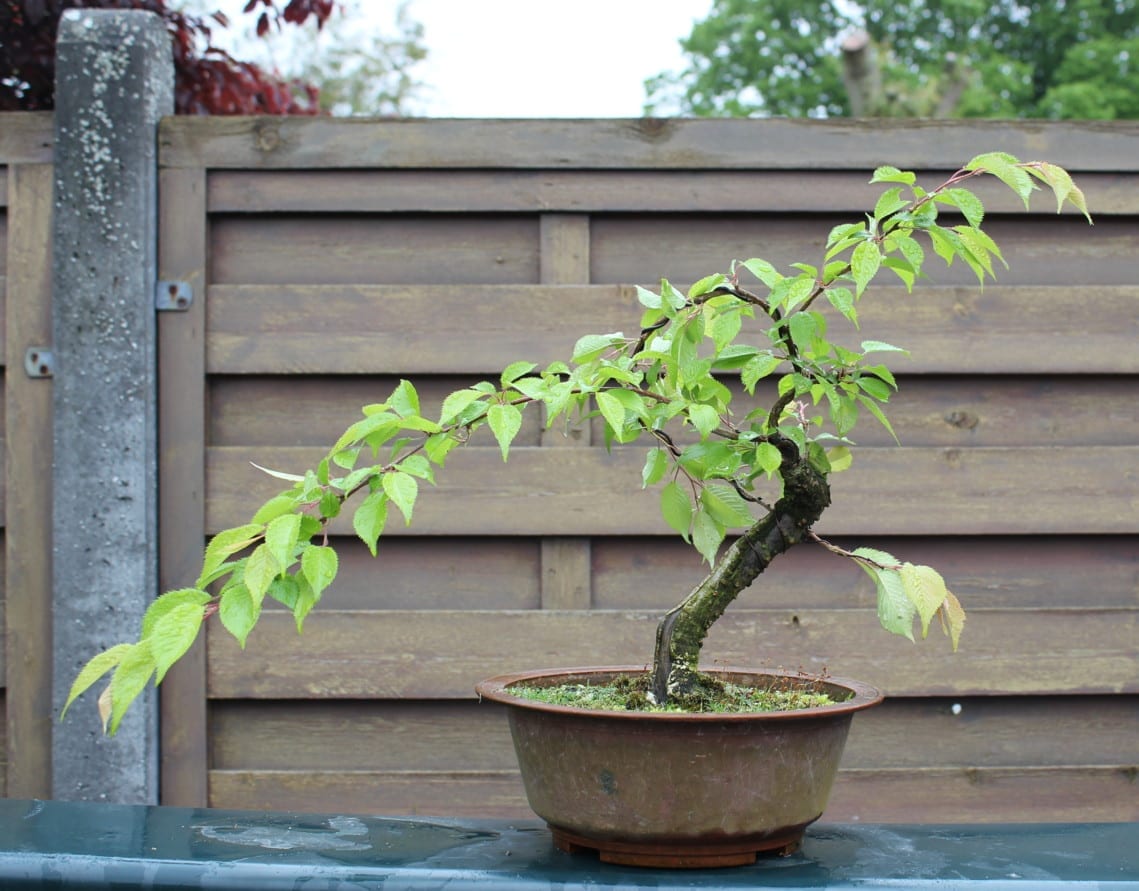
Where to buy Prunus serrulata 'Kanzan'?
We can buy it in nurseries and garden stores, both online and, sometimes, physically. Let's remember that it does NOT produce seeds, so if we ever see that they sell seeds supposedly from this cultivar, we do not have to be fooled.